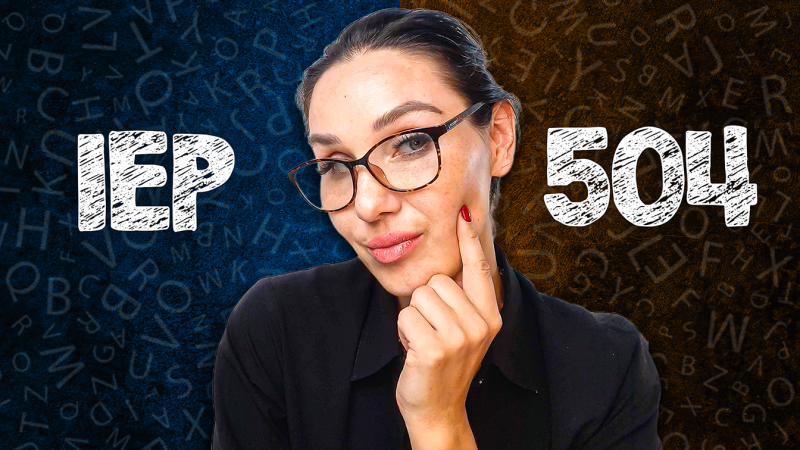
If Your Child is Struggling in school start a free trial of the Learning Success System
Navigating the educational realm, many parents find themselves entangled in the intricacies of IEPs and 504 plans. While seemingly similar, these two paths cater to diverse needs. Let's demystify them for you.
Understanding IEPs and 504 Plans: A Guide for Parents
IEPs and 504 plans are terms often used interchangeably, but they serve different purposes. This guide illuminates their distinctions, empowering parents to make informed choices.
The Basics of IEP and 504 Plans: IEPs are tailored plans crafted for children with specific disabilities requiring specialized classes and assistance. This collaborative effort involves teachers, parents, and experts. On the contrary, 504 plans cater to students with learning challenges who can attend regular classes but need specific accommodations. Think of IEPs as special assistance routes and 504 plans as enhancements to the regular school environment.
Diving Deeper: Objectives and Services
IEPs prioritize personalized education to ensure academic success for children with particular disabilities. It's not just about classroom instruction; IEPs offer additional services such as speech therapy. On the flip side, 504 plans emphasize equality in access. While an IEP might provide specialized tutors, a 504 might adjust seating arrangements for better focus.
Eligibility Criteria:
To qualify for an IEP, a student must have one of the 13 disabilities specified under the Individuals with Disabilities Education Act (IDEA). Furthermore, this disability should pose a significant barrier to their education. Conversely, 504 plans have a broader scope. Any substantial impairment affecting daily life, such as walking or learning, may render a student eligible
Documentation and Review
IEPs are legally binding agreements that schools must respect and implement. They're reviewed at least once a year. 504 plans, though less formal, are still crucial, and schools must adhere to them. Their review schedule might be more flexible, tailored to the student's needs.
Funding:
IEPs come with federal funding to support the stipulated services. 504 plans don’t directly receive additional federal funds, but schools must comply to continue receiving any federal assistance.
Key Takeaways:
Making the Right Choice
Selecting between an IEP and a 504 plan hinges on a child's unique needs. If specialized instruction is crucial, an IEP is apt. If the focus is on accommodations in a standard class setting, a 504 plan might be the answer. Engage with educators, administrators, and special education advocates for guidance.
The Role of Parents:
Parents play a pivotal role in bridging learning gaps. The Learning Success System, an educational therapy program, is a valuable tool in this context. It addresses foundational skills, helping children overcome specific learning disabilities and boosting their confidence. While schools play their part, parents can supplement with exercises from this system to ensure no child is left behind.
And, if you sense that your child is starting to struggle in school, do what thousands of other parents have done. Start a free trial of the Learning Success System.
Learn everything you need to know about IEP's in this new documentary.
Get the full documentary here
Or watch on Amazon Prime Video









